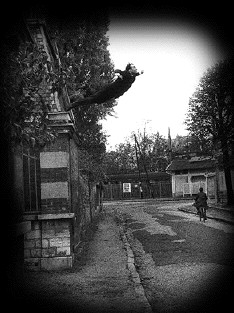Shut up and Breathe
 |
In spring of 2002, I was in the hospital with a condition known as Acute Respiratory Distress Syndrome (ARDS). ARDS is a life threatening injury to the lungs which often requires mechanical ventilation during a drug induced coma. It is often brought on by a severe trauma to the body; car accident, fall, heart attack, or in my case, pneumonia.
Most ARDS patients experience vivid, life transforming dreams and hallucinations during their ordeal. Many of these visions are terrifying and horrific; some are heroic, epic and life affirming.
An enduring, life affirming theme that helped sustain me throughout my experience involved the shakuhachi.
Anyone who has picked up a shakuhachi has experienced that rare moment when playing is effortless. Some refer to this moment as Blowing Zen. Regardless of the label, it is an experience that is outside of self, skill, opinion and intention.
The most important moment in my life occurred during my hospital stay. I was in bad shape, and I knew it. It was very difficult to breathe and I was aware that I might die. I felt an overwhelming sense of fear, horror and guilt. The thought occurred that I could give up, avoid my predicament and die.
I also thought about those perfect moments with the shakuhachi and how it was necessary to apply their tangible lessons immediately. I remembered how the most difficult things are actually the easiest because they are directly in front of our eyes. I also remembered that in order to play well, or make a good flute, one must take the path of least resistance.
The shakuhachi was finding its way into a horrific moment of despair and transforming it into a heroic experience. I was learning to shut up and breathe. I was realizing that I wanted to live and I was learning how to do it.
This life affirming experience continued to provide strength for me through many dark periods of my illness and recovery. The shakuhachi continues to teach without trying. Its humble presence has instilled a daily reverence for sacred responsibility in my life . It is a gift for which I am forever grateful.
As I look back on my experiences with bamboo, I often wonder about what the shakuhachi is and what it means to me. I also think about how my relationship with bamboo has evolved over the years.
When I began making shakuhachi, I felt that the essence of this mysterious instrument was hidden in the bamboo. Eventually, I learned something of physics and deduced that its secret was found not in form, but in emptiness. After exhausting my interest in a scientifically weighted approach, I sought the middle way and learned that the shakuhachi was about both bamboo and emptiness. Now, after listening closer, I hear it is about neither.
Breathe well.
Ken LaCosse